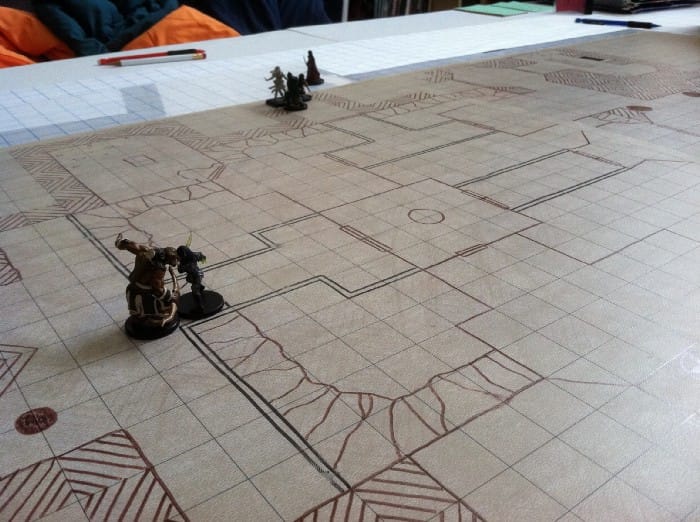Tools for Enhanced 5E Combat

As a Dungeon Master, we strive for fun and exciting combat encounters. The mechanics of Dungeons & Dragons 5th Edition provide us with a nice toolset to help. But it isn’t perfect. Combat can drag, feeling like a chore. Or even worse, it can turn into a slugfest of nothing more than “I hit again” followed by the same old attack roll.
Last year, I started experimenting with optional combat mechanics from other editions of D&D and other games. I refined it down to four that were simple to use and added a notable change in pace and excitement for myself and the players.
Action Points
One of my group’s favorite tools from 4th Edition D&D was the Action Point. We also missed it as soon as we started playing 5th Edition. It goes like this. PCs start with 1 Action Point. For every 2 encounters without a long rest, PCs gain another Action Point. You can have no more than 3 Action Points at a time. A long rest resets everyone to 1 Action Point. An Action Point can be used on your turn to grant a single additional action. In 5th Edition, this could trigger an entire chain of attacks all over again. So you might add the clause that it can only be a single attack or even bonus action.
The players love these. Maybe they missed an attack they were really excited about. Now they have another card to play. It is one more thing to track but well worth it. Hand out tokens or cards to players to throw down when they use an Action Point to make tracking easier.
Timer
Inspired by our good friend at Runehammer, this tool adds an element of urgency and anxiety for the players. At the start of an encounter, a d4 is set on the table with the 4 face up. Each round, the die decrements by 1. This represents how many rounds are left until the timer goes off. If combat isn’t ended by when the timer goes off, something bad happens. Possibly reinforcements, an environmental effect, etc. The point is, the battle changes significantly.
For boss fights, a second timer starts after the first goes off. If the second timer goes off before combat ends, something really bad happens. Maybe the boss regains spell slots or a devastating ability.
The timer encourages solutions when fighting to the death isn’t enough.
Defending Timer
If the Player Characters are defending something from an attack (maybe a town, room or person), it makes perfect sense that the timer is in their favor. If they can hold off the enemy forces long enough, reinforcements arrive.
Escalation Die
From the amazing 13th Age, the escalation die aids in preventing long, drawn-out battles due to poor die rolls. This represents the escalating energy in a battle and PCs figuring out the fight. At the start of the 2nd round, PCs gain a +1 to attacks. This increases by 1 each round to a maximum of +6. This applies to PCs only, not monsters/creatures/villains.
My players enjoyed this mechanic. And it does help advance combat in the later rounds with increasing the odds to hit. Combat tends to escalate in intensity and excitement instead of dying down (as I believe it should). But this one is harder to remember and track as the DM. I usually set a die out in clear sight of everyone so they can see the current bonus. You just need to remember to adjust it after each round.
Active Disengagement
Slugfests are the worst. A PC standing toe-to-toe with an enemy, the two just taking turns with melee attacks. Enter Active Disengagement. When engaged in melee combat, if a PC hits the enemy with an attack, they can use their Move on the same turn to move away without provoking an opportunity attack from the character they hit. This encourages movement and more dynamic combat.
Warning: This rule directly violates a written rule in 5th Edition. When changing a rule like this, make sure everyone at the table is aware ahead of time and on board for the change. Additionally, if you’re already using advanced techniques to keep combat interesting, you can probably ignore this tool. It’s a great for initiating more interesting combat in your groups but my hope is that you wouldn’t need it in the end, given all of the other tools and options available to you.
With these tools in hand, you can enhance your D&D 5th Edition combat. They’re battle-tested and they work. I’ve presented them in my preferred order so if you’re looking for only one or two, start at the top. Looking to take combat to the next level? Check out The Monsters Know What They’re Doing by Keith Ammann.
